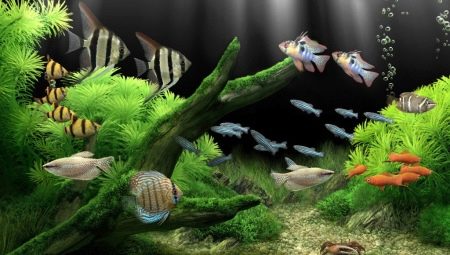For beginner aquarists, as well as for those lovers of artificial ponds who do not have the opportunity to spend a lot of time caring for the inhabitants of the aquariums, unpretentious fish exist. All their content usually comes down to feeding and timely replacement of water.

Features
Of course, any person can buy those fish that he likes externally, but, as practice shows, it is best for beginners to start with varieties that are simple in content.
All fish living in aquariums, which can be classified as unpretentious, feel quite comfortable in the water with any characteristics - for them acidity, level of hardness and even temperature are not of fundamental importance. In most cases, thorough filtering is also not required - for full growth and reproduction, the simplest internal filter with a sponge, which performs mechanical cleaning, is quite enough for them. As for aeration, much depends on the characteristics of the tank.
If this is a desktop round model with a large number of living plants, then there is no need to purchase a compressor. Moreover, some species of fish (males, gourami) have an organ through which they are able to breathe oxygen from the air.

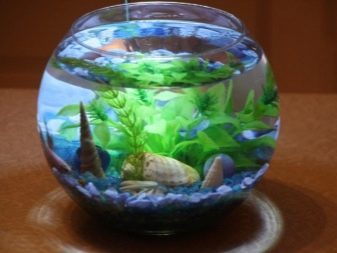
One of the main advantages of unpretentious fish is that they do not require spacious aquariums. The calculation of individuals for each tank depends on the characteristics of the fish. For example, for small guppies, 2 liters per fish will be quite enough, the swordsmen need a little more space - 5 liters, but each barbus should already have about 10 liters.
And of course fish from the most unpretentious category make low demands on the level of light, the regularity of water changes and feed. They are able to withstand increased loads, although it is better not to force them to be in a tense state, since this can significantly reduce their life expectancy.
Usually, unpretentious fish - creatures are quite peaceful, so they can rightly be called universal. They get along well with many other species of fish, so the aquarist can always buy several schools (for example, neon, guppy, zebrafish) without any fear that they can harm each other. These fish will perfectly coexist in the same water column, delighting their breeders with a variety of colors and interesting habits.
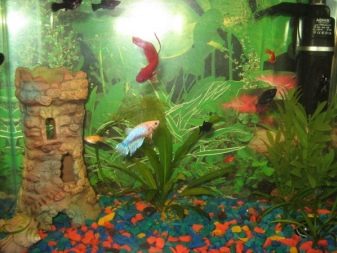
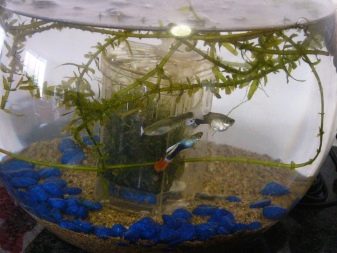
Kinds
The following representatives of aquatic flora are considered the most enduring and hardy fish.
- Guppy. According to the description, this is perhaps the easiest aquarium fish to keep, which is why they most often become the first pets of beginner aquarists. They are able to survive in a tank without filter and aeration. Guppies feel quite comfortable in water with a temperature of 18-28 degrees, they have good survivability and conflict-free, so they easily coexist with a wide variety of aquarium inhabitants.
However, do not forget that guppies are viviparous fish, which means that the population can grow as soon as possible if you do not pay enough attention to this process. These small fish are kept in groups of 5 individuals.
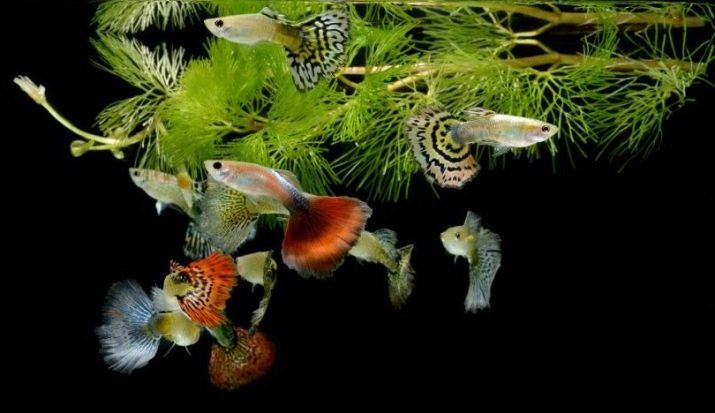
- Swordsmen. Another representative of unpretentious fish, whose body length reaches 10 cm, they got their name due to the peculiar shape of the tail, usually found in groups of 3-5 individuals. Sword-bearers are quite comfortable in small tanks, temperatures from 21 to 26 degrees are suitable for them, but even with heating at only 15 degrees they can survive. These fish feed on both plant and live food. Swordsmen feel best in shelters and all kinds of vegetation, fish have a habit of jumping out of the water, so it is advisable to install glass or a lid on the aquarium.

- Somiki. This is a large group of unpretentious aquarium inhabitants, which includes several varieties.
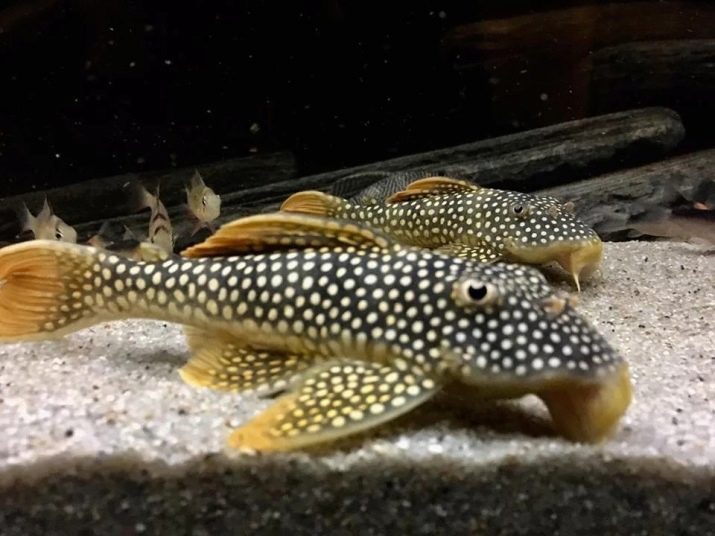
- Corridor. These are unpretentious peace-loving and at the same time very interesting fish, they usually swim in small flocks and play hide and seek with each other. For a full existence, a water temperature of 20-25 degrees is suitable for them, it is desirable that the water be soft with low acidity.
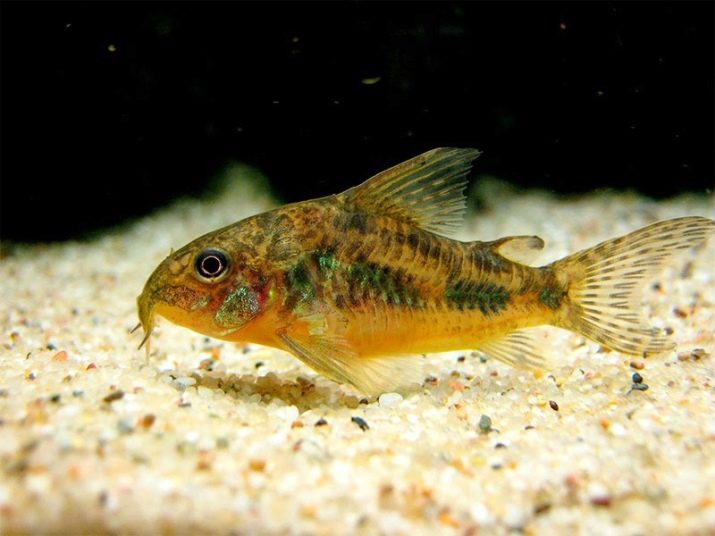
- Tarakatum. These fish need a spacious aquarium, but they can easily get along with a wide variety of aquatic inhabitants - thanks to the hard shell they are not afraid of even meeting with predators. These fish live for about 10 years, in the aquarium they prefer to spend time in shelters, as well as snags and caves.
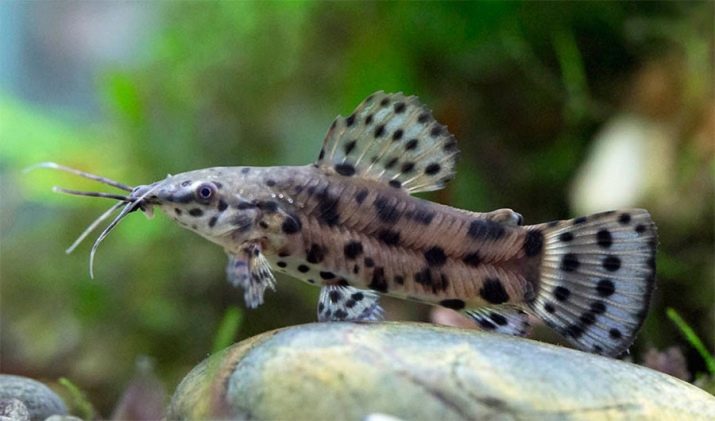
- Antsistruses. These catfish are completely unpretentious to the conditions of their existence - they are suitable for water, heated to 20-28 degrees. These fish live for about 10 years, prefer plant food, so they can even throw pumpkin, cucumbers, zucchini, as well as dandelion leaves and other greens into the aquarium. In addition to the fact that these fish are unpretentious, they are also very useful - these aquatic inhabitants clean the glass and remove the remnants of food from the bottom.
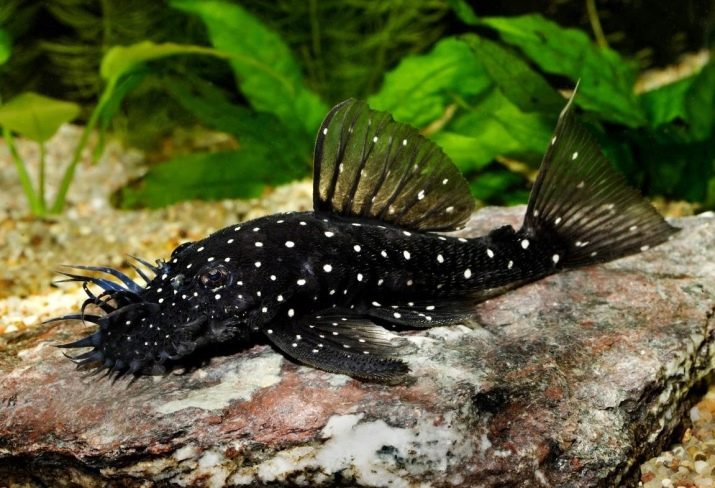
- Pecilia. This is one of the most hardy aquarium fish, which are completely unpretentious to the characteristics of the liquid. Pecilia can exist for a long time without oxygen saturation and filtration, they feed on a wide variety of feeds and can even multiply in an unfavorable environment. These fish can not be called flocking, but their content with related species is allowed.
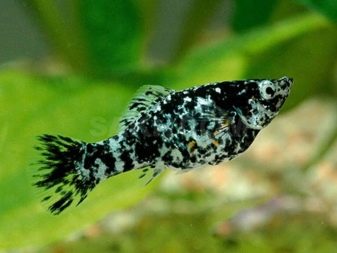
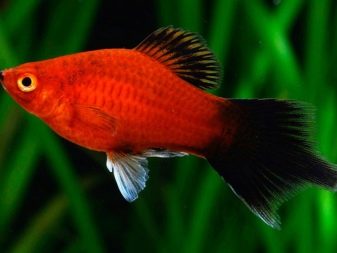
- Danio They are distinguished by their peacefulness and therefore most often live in flocks, due to which their interesting coloring looks even brighter. Typically, such fish grow small, not more than 3-4 cm, they feed on both dry food and frozen protein foods. Suitable water temperature for them is 20-26 degrees.

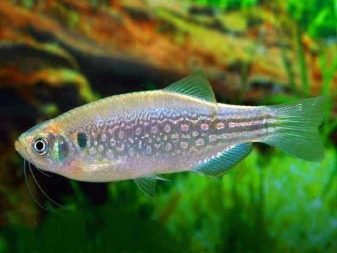
- Neons One of the most common and beautiful species of fish among aquarists. These aquatic inhabitants are distinguished by an interesting coloration - they have a pronounced neon strip on the body, which, depending on the species, can have different colors. Fish prefer cool water at the level of 18-22 degrees, they live in small flocks of 5-6 individuals.
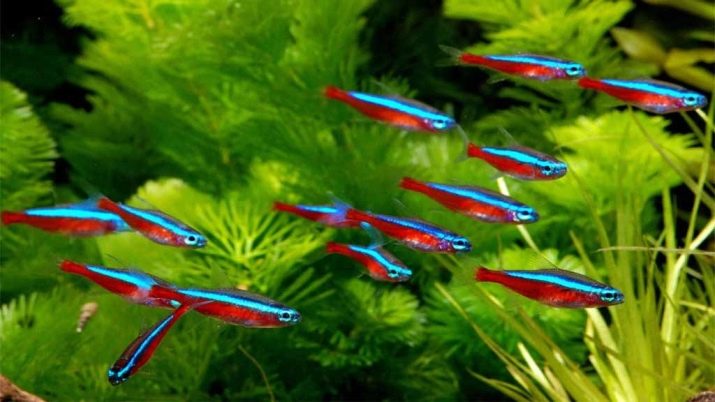
- Cockerels. Also refer to unpretentious fish. These are fighting fish that show extreme aggression towards smaller neighbors, cichlids and other predatory fish, and intraspecific conflicts between males are far from rare. It is important for these fish that the water always remains clean, but in all other respects they are completely unpretentious. They do not need aeration, they are able to breathe the most common oxygen.

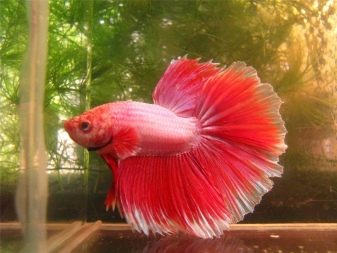
How to choose?
Fans of aquarium fish are well aware that even a miniature aquarium can always be turned into a real masterpiece if you correctly select the inhabitants for it and create favorable living conditions. There are many selection criteria - color, shape, size, personal sympathies.
Any container smaller than 50 liters is considered small, however, pets can even be accommodated in a 10-liter aquarium. However, you need to calculate your strengths: the smaller the volume of liquid, the more often you will have to do cleaning, monitor the maintenance of water quality.
As a rule, filters and air compressors have rather big dimensions, therefore they simply can not physically fit in a small container - this must be borne in mind, otherwise even the most expensive fish may simply die.
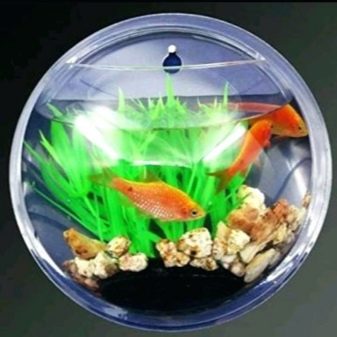
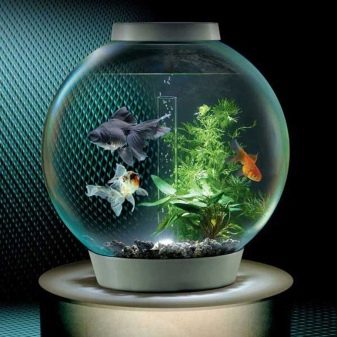
For a small aquarium
When choosing residents for a small aquarium, there are several recommendations:
- in small artificial reservoirs it is impossible to contain predatory fish;
- if you prefer to buy fry, be sure to first study the information about these fish and find out - to what sizes they can grow;
- you don’t need to start a lot at once, on average, about 3-4 liters of water are needed per individual up to 5 cm in size, so it is easy to calculate that in a 30 liter aquarium you can place no more than 7-8 unpretentious fish;
- start fish with similar behavioral characteristics, it is not necessary to populate inactive individuals and those who constantly move in the water column in one tank.
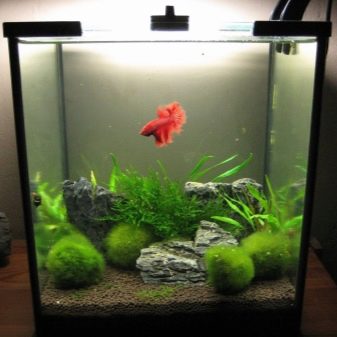
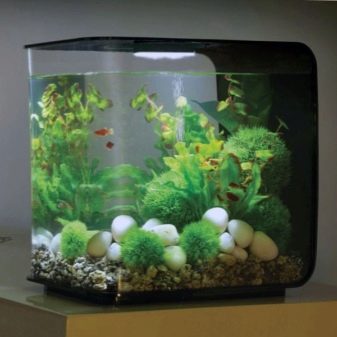
For large capacity
For larger aquariums, you can select large fish with a length of 5 cm or more, but pets should be kept in accordance with the principles of uniform filling of the entire volume of the aquarium. Such fish should be combined vertically so that it doesn’t turn out that one of the layers (bottom, middle or top) is overpopulated, and the other is empty.
Despite the fact that unpretentious fish can exist in different temperature conditions, nevertheless, preference should be given to specimens, the content of which needs about the same level of heating.
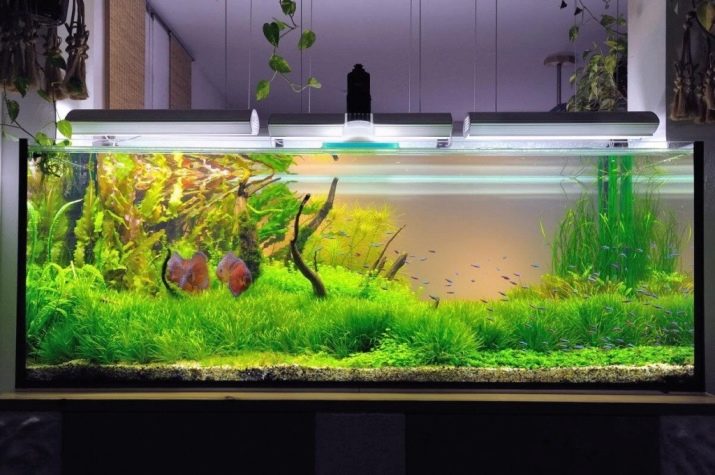
Maintenance and Feeding
The concept of “unpretentious fish” does not mean at all that these pets can be offered any living conditions, therefore, regardless of the variety and category of fish, some basic rules should be followed.
Take your time - the launch of any aquarium takes at least two weeks. This period is necessary from the gulf of water to the launch of the inhabitants.
Give up artificial plants - it is optimal that the algae, as well as the soil and decor elements are natural, plastic in an artificial pond is not welcome.
Even if you have the most viable fish living, you should not refuse the filter, and the cleaning system should work around the clock, turning off is a necessary measure under force majeure circumstances.
Do not forget to regularly change the water, it is advisable to renew the aquarium by about a third every week. Complete one-time water changes are not permitted.
Do not overfeed your pets - they need very little food, and once a week they should arrange a fasting day.
Remember, an aquarium is a complex ecosystem. It is not necessary without a special need to make hand manipulations there, to use chemical and other drugs.
Extremely important Do not overpopulate the aquarium. Each variety has its own parameters that describe the need for a volume of water, and it is better to adhere to them. Otherwise, there is an excessive congestion of the biocenosis due to an increase in the concentration of nitrates, as well as nitrites and phosphates in the liquid, as a result of poisoning of large and small inhabitants of the aquarium, and the fish will not live long.
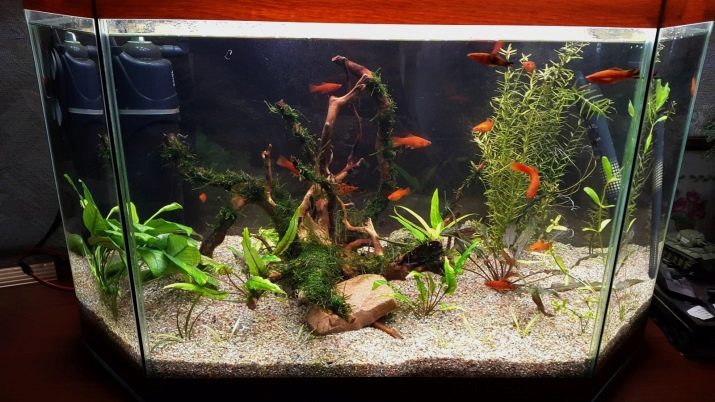
How to breed?
Most of the unpretentious fish easily reproduce in artificial conditions, the only exception is the representatives of the haracin family - only experienced breeders and aquarists can breed them.
For beginners, preference should be given to viviparous cyprinids. Anitruses, catfish and other speckled ones easily spawn in a common artificial pond, breeding without barbs and zebrafish occurs without any problems, and cichlids even carry their offspring in their mouths.
However, for greater comfort and convenience of the aquarium inhabitants, as well as to preserve the integrity of the offspring, it should be clarified whether this species has a predisposition to cannibalism - otherwise you are unlikely to be able to save the fry in full.
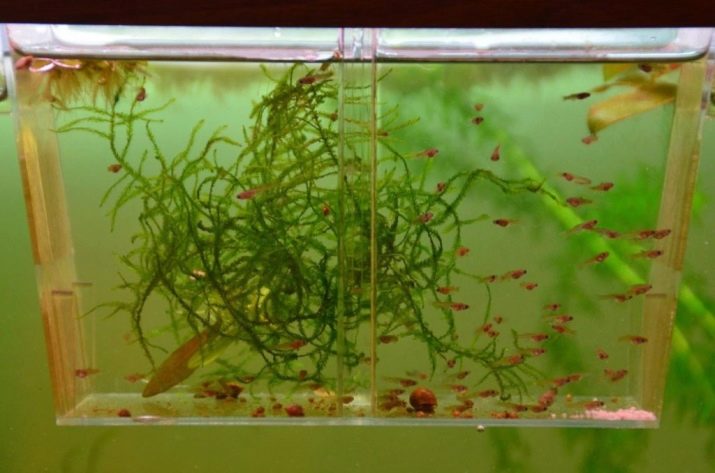
Compatible with other fish
When settling pets, it is necessary to consider several important points.
Individual species of fish are adapted to schooling, in solitude they begin to wither and die. At this point, you need to pay attention in the first place.
Comfortable living conditions (water, hardness and acidity) should be approximately the same.
Fish in a common aquarium must be peaceful.
Keep in mind: even the most peace-loving small fish can not stand the neighborhood with each other. Therefore, you must pay attention to the compatibility of the breeds.
It is important to take into account the volume of the aquarium, for example, no more than 2-3 fish up to 6 cm long can be placed in a 10-liter tank. If you do not pay proper attention to the rules of the neighborhood, the microclimate will become unfavorable, which will most negatively affect the fish’s health.
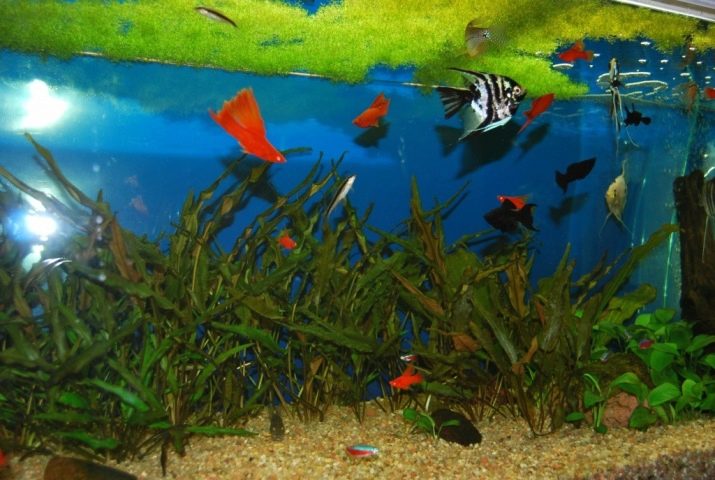
So, in a 10-liter aquarium you can put the following fish, choosing one of the options:
- 1 cockerel;
- 5-7 guppies;
- 3-5 cardinals;
- 7-8 zebrafish;
- 5 neons;
- 3 guppies + 6 zebrafish;
- 4 neon + 2 guppies.
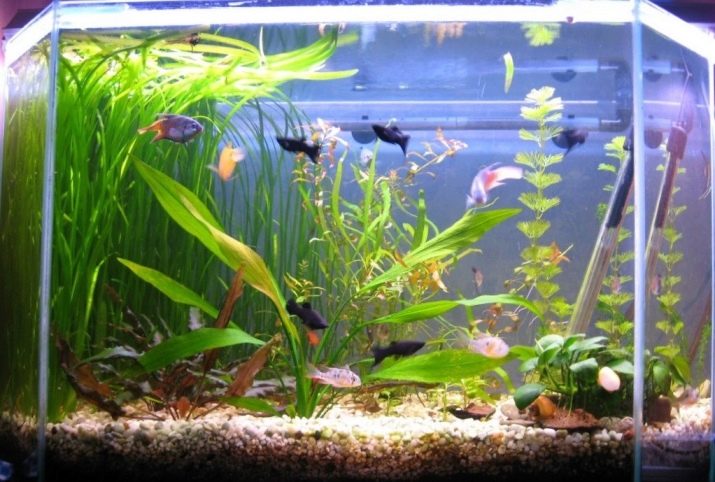
For a 20 L aquarium, consider the following neighborhood options:
- 1 cockerel + 3 corridors;
- 16-18 zebrafish;
- 10-12 guppies;
- 10-14 neons;
- 7 cardinals;
- 6 neon + 4 corridors;
- 5 guppies + 5 neon;
- 10 guppies + 2 corridors.
In larger home aquariums, there is much more room to keep fish, but novice breeders are better off with options for 10-20 liter aquariums.
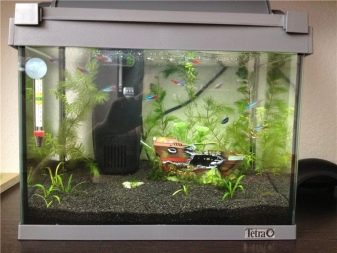

Below you can watch a video review of the most unpretentious aquarium fish.
